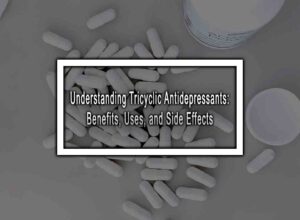Table of Contents
ToggleCutting Through Taboos: Understanding Non-Suicidal Self-Injury
Non-suicidal self-injury (NSSI) is a complex issue that often evokes strong emotions and misconceptions. It’s essential to approach this topic with empathy, understanding, and the intent to provide helpful insights. In this article, we’ll explore ten expert-backed techniques and coping strategies to support individuals struggling with NSSI, aiming to promote mental well-being and healthy coping mechanisms.
1. Foster Open and Supportive Communication
Creating a safe and non-judgmental space for individuals to express their emotions is crucial when tackling NSSI. Encourage open conversations, actively listen without interruption, and validate their feelings to build trust and understanding.
2. Identify Triggers and Alternative Coping Mechanisms
Understanding the triggers that lead to NSSI episodes can pave the way for healthier coping mechanisms. Encourage individuals to explore and engage in activities like journaling, drawing, or engaging in physical workouts as alternatives to self-injury.
3. Seek Professional Help and Guidance
It’s vital to involve mental health professionals in the journey toward recovery. Trained therapists can provide tailored treatment plans, teach coping mechanisms, and create a supportive network that aids in healing.
4. Promote Self-Care and Stress Reduction
Encourage individuals to prioritize self-care activities that foster relaxation and stress reduction. Engaging in activities like taking bubble baths, practicing mindfulness or meditation, or pursuing hobbies can help redirect negative thoughts and promote emotional well-being.
5. Build Solid Support Networks
Strong support networks play a critical role in helping individuals cope with NSSI struggles. Encourage the cultivation of relationships with trusted friends, family members, or support groups that provide empathy, understanding, and encouragement during challenging times.
6. Develop Emotional Regulation Techniques
Teaching and practicing emotional regulation techniques can help individuals manage intense emotions effectively. Techniques like deep breathing exercises, progressive muscle relaxation, or guided visualization can provide relief during moments of distress.
7. Encourage Positive Self-Expression
Artistic outlets like painting, creative writing, or music can be incredibly therapeutic and serve as healthier ways to channel emotions. Encourage individuals to explore these forms of self-expression, allowing for the release of emotions in a constructive manner.
8. Understand Underlying Mental Health Conditions
NSSI is commonly associated with underlying mental health conditions such as depression, anxiety, or borderline personality disorder. It’s crucial to educate ourselves and seek professional guidance in understanding these coexisting conditions and how they relate to NSSI.
9. Encourage Healthy Coping Strategies
Replacing self-injury with positive coping mechanisms is integral to recovery. Promote the usage of healthy coping strategies such as exercising, practicing mindfulness, talking to loved ones, or engaging in hobbies to redirect negative energy.
10. Provide Ongoing Support and Encouragement
Recovery from NSSI is a lengthy process that requires ongoing support and patience. Ensure individuals are surrounded by a strong support system, reinforcing their progress and reminding them of their resilience during difficult moments.
Conclusion
Non-suicidal self-injury can be a challenging journey filled with complexities, but it’s crucial to challenge the stigmas attached to it and promote understanding and support. By following these ten expert tips and coping techniques, we can foster a more compassionate environment and empower individuals struggling with NSSI to find healthier ways to cope, heal, and journey toward mental well-being. Remember, together, we can make a difference and help build a world where everyone feels valued and supported.
Non-Suicidal Self-Injury FAQ
Here are the most common questions about non-suicidal self-injury.
1. Why do people engage in non-suicidal self-injury?
People may engage in NSSI for various reasons, including emotional regulation, expressing emotions that are difficult to verbalize, seeking control over their own bodies, feeling a sense of relief or distraction, or as a way to punish oneself.
2. What are some common methods of non-suicidal self-injury?
Some common forms of NSSI include cutting, burning, hitting or punching oneself, scratching, biting, pulling out hair, or intentionally causing wounds that are difficult to heal.
3. Is non-suicidal self-injury a mental illness?
NSSI itself is not considered a mental illness. However, it is often associated with underlying mental health conditions such as depression, anxiety disorders, borderline personality disorder, or post-traumatic stress disorder (PTSD). People who engage in NSSI may benefit from seeking professional help for these underlying issues.
4. How prevalent is non-suicidal self-injury?
Prevalence rates vary, but studies indicate that between 13% and 23% of adolescents and young adults engage in non-suicidal self-injury at some point in their lives. It can affect people of all ages and demographics.
5. Is non-suicidal self-injury the same as attempted suicide?
No, NSSI and attempted suicide are distinct behaviors. While both involve self-inflicted harm, NSSI is not intended to result in death. However, engaging in NSSI does increase the risk of suicidal thoughts and behaviors.











